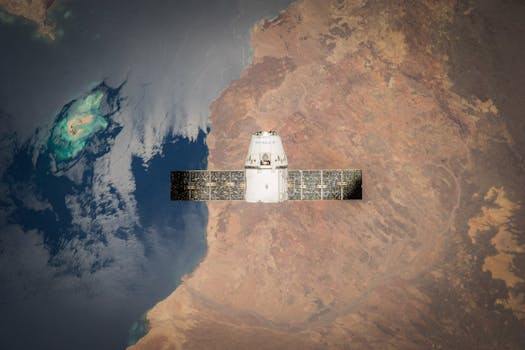Orbiting Innovations: Key Updates in Satellite Telecommunications Technology

Orbiting Innovations: Key Updates in Satellite Telecommunications Technology
Satellite telecommunications technology has come a long way since its inception, and recent advancements have been nothing short of remarkable. With the increasing demand for global connectivity, satellite technology has emerged as a vital component in bridging the gap between remote and urban areas. In this article, we will delve into the latest updates and innovations in satellite telecommunications technology, exploring their impact on various industries and individuals.
The advent of 5G networks has been a significant catalyst for the growth of satellite telecommunications. With the ability to provide faster data speeds and lower latency, 5G has enabled the widespread adoption of satellite-based services. Moreover, the development of low-Earth orbit (LEO) satellites has reduced the cost and increased the efficiency of satellite launches, making it more accessible for companies and organizations to establish their own satellite constellations.
Advancements in Satellite Technology

Several recent advancements have contributed to the rapid evolution of satellite telecommunications technology. One of the most significant developments is the use of phased arrays, which enable satellites to steer and shape their beams electronically, resulting in improved connectivity and reduced interference. Additionally, the implementation of advanced propulsion systems has increased the maneuverability and lifespan of satellites, allowing them to maintain their position and perform more complex tasks.
Another crucial aspect of satellite technology is the development of high-throughput satellites (HTS), which offer significantly higher data speeds and capacity than traditional satellites. HTS have become increasingly popular for applications such as broadband internet access, mobile connectivity, and earth observation. The use of HTS has also enabled the creation of satellite-based IoT networks, which are revolutionizing the way we collect and analyze data from remote and hard-to-reach areas.
Impact on Industries and Individuals

The impact of satellite telecommunications technology is being felt across various industries, from aviation and maritime to healthcare and education. For instance, satellite-based connectivity is enabling in-flight Wi-Fi and maritime communications, improving the safety and efficiency of transportation systems. In the healthcare sector, satellite technology is being used for telemedicine and remote health monitoring, expanding access to medical care and services.
Individuals are also benefiting from the advancements in satellite telecommunications technology. With the increasing availability of satellite-based internet services, people in remote and underserved areas are gaining access to high-speed internet and a range of online services, including e-commerce, online education, and entertainment. Moreover, satellite technology is enabling emergency response and disaster relief efforts, providing critical communications infrastructure in times of crisis.
Challenges and Future Directions

Despite the significant progress made in satellite telecommunications technology, there are still several challenges that need to be addressed. One of the major concerns is the management of space debris, which poses a significant threat to the long-term sustainability of satellite operations. Additionally, the regulatory framework governing satellite telecommunications is still evolving and requires further development to ensure that the benefits of satellite technology are equitably distributed.
Looking ahead, the future of satellite telecommunications technology holds much promise. With the development of next-generation satellite systems and the integration of artificial intelligence and machine learning, we can expect to see even more innovative applications of satellite technology. The potential for satellite-based 6G networks is also being explored, which could further revolutionize the way we communicate and access information.
See more:







